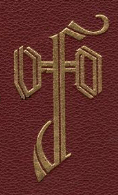Factory Workers' Union of Germany
The Factory Workers' Union of Germany (Verband der Fabrikarbeiter Deutschlands, VFD, commonly known as Fabrikarbeiterverband, FAV) was a trade union in Germany.
 | |
| Native name | Fabrikarbeiterverband |
|---|---|
| Motto | Solidarität |
| Motto in English | Solidarity |
| Founded | July 1890 |
| Successor | Chemical, Paper and Ceramic Union |
| Date dissolved | May 2, 1933 |
| Members | 720,000 (1922) |
| Journal | Der Proletarier |
| Affiliation | ADGB, IFF |
| Office location | 3 Rathenau-Platz, Hannover |
| Country | Germany |
History
The union was founded in early July 1890, as a general union affiliated to the General Commission of German Trade Unions, gathering unskilled workers from many different industrial sectors. It was initially named the Union of Factory, Agricultural and Commercial Support Workers in Germany It grew rapidly, with 11,000 members by 1896, and 76,000 by 1905. However, in 1906, it decided to only represent workers in six industries:[1]
- Chemical industry
- Paper making
- Brick making
- Sugar refining
- Agriculture
- Dairies, distilleries and related trades
In light of this, in 1908, it changed its name to the "Factory Workers' Union of Germany", and by 1912, it had come to focus on the chemical, paper, building materials, and food industries. This strategy proved successful, and by 1913 the membership had reached 210,000.[1] That year, the Union of Flower Workers joined, while the Union of Wallpaper, Oilcloth and Linoleum Printers joined in 1919.[2]
In 1919, the union was a founding affiliate of the General German Trade Union Confederation,[3] and in 1922 its membership peaked at 720,000. It declined during the Great Depression, and by 1932, it had around 350,000 members.[4] This was despite merging with the Central Union of Glassworkers and the Union of Porcelain and Related Workers of Germany, in 1926.[1]
By 1929, the union had seven sections:[2]
| Section | Members |
|---|---|
| Chemical Industry | 130,122 |
| Paper Industry | 86,189 |
| Food Industry | 40,024 |
| Toy, Artificial Flowers and Feather Industry | 8,021 |
| Fine Ceramics | 50,602 |
| Clay and Building Materials | 109,793 |
| Miscellaneous Industries | 18,238 |
FAV published the weekly newspaper Der Proletarier.[3] In April 1933, the Nazi government replaced its leadership with a Nazi commissioner, and the union was forcibly dissolved on 2 May 1933. After World War II, workers in the relevant sectors were represented by the Chemical, Paper and Ceramic Union.[1]
Presidents
- 1890: August Brey
- 1931: Karl Thiemig
References
- Weber, Hermann (1929). Vom Fabrikarbeiterverband zur Industriegewerkschaft Chemie, Papier, Keramik. Materialien und Dokumente. Cologne: Bund-Verlag. ISBN 376633168X.
- Riemann, Gustav (1931). Verband der Fabrikarbeiter Deutschlands. ADGB. pp. 1840–1846. Retrieved 8 June 2020.
- Chamberlin, Waldo. Industrial Relations in Germany 1914–1939. Stanford University Press. p. 125. ISBN 978-0-8047-0410-6.
- Campbell, Joan; Windmuller, John P. (1992). European Labor Unions. Greenwood Publishing Group. p. 159. ISBN 978-0-313-26371-2.